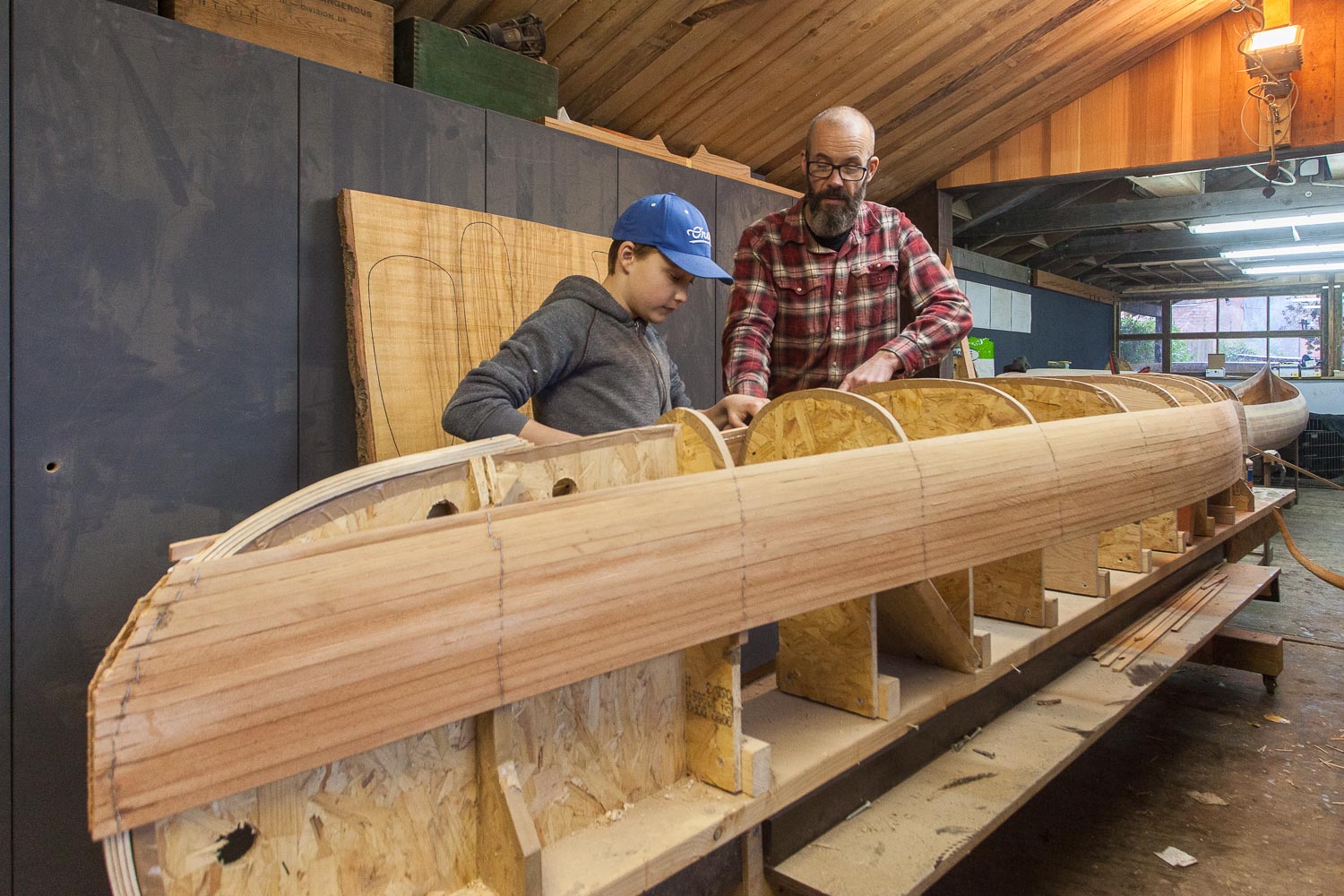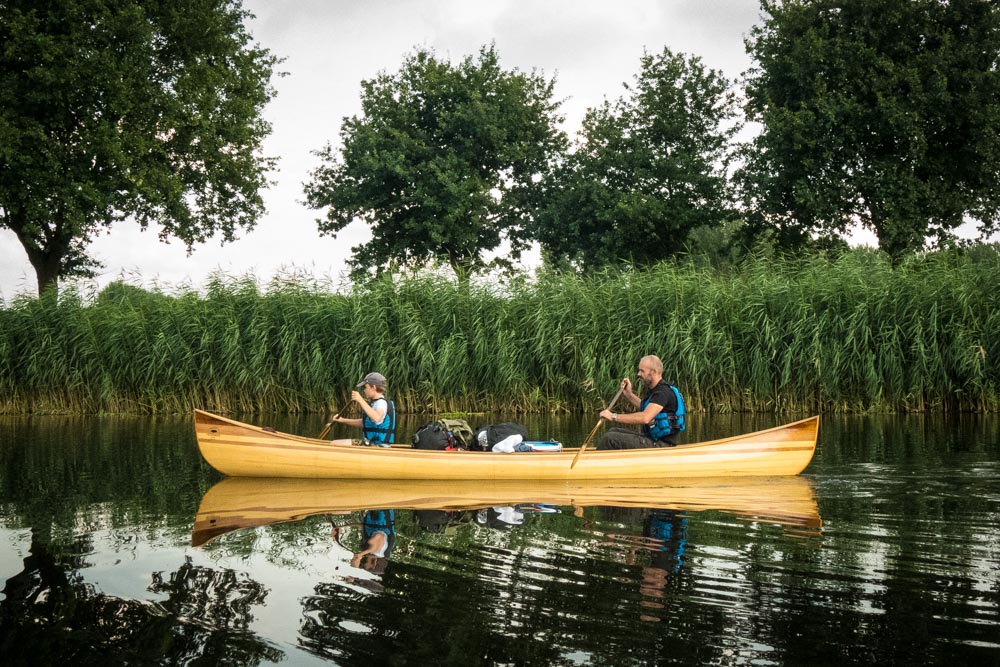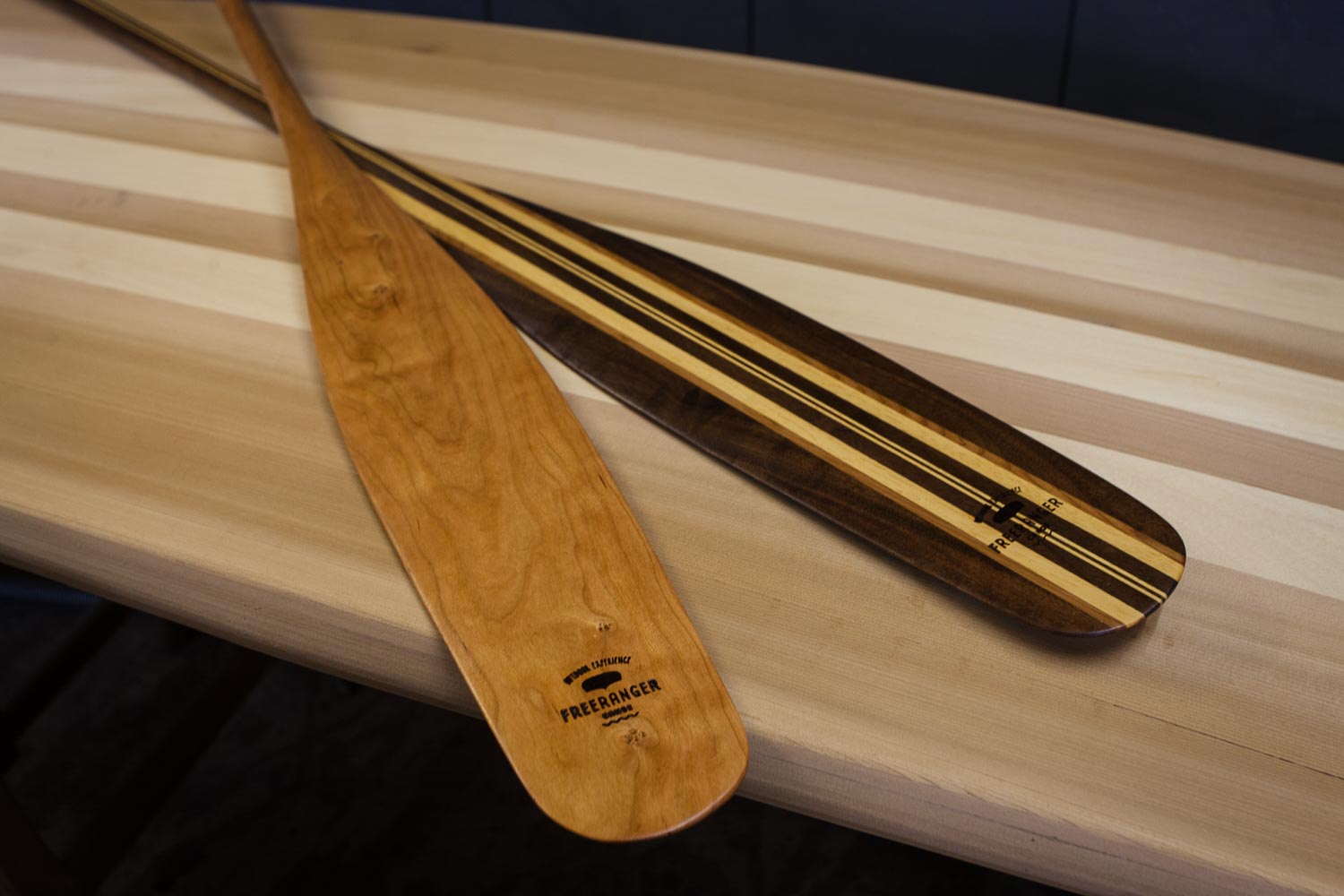How a passion became a life style
We’ve had the honor to be featured on the artisans blog Labois. Enjoy the read!
Wood is a surprising material, from which we often forget that it also floats. In the postindustrial era, where iron, plastic and fiberglass seem to have conquered all the waters -and markets-, a sense of happiness invades us when we discover projects like those of Canoe Builder Bart Deseyn. From his small workshop, canoe builder Bart Deseyn elaborates canoes and wooden oars with his son. From his hands works have come halfway between history and innovation. Because, after all, all innovation starts from a past and with a commitment to know-how.
At Labois we have had the pleasure and honour to know this craftsman more closely, who, far from falling into the stereotype of a trade from another time, he has been able to listen to his clients and update these curious boats. Today, his project is a model of professional craftsmanship, which combines production by request with specialized workshops. This is how he explained us how his passion become a lifestyle.

Wood and water. A project called Freeranger Canoe.
When did your hobby for working wood and canoe construction start?
I’ve been a canoeist and an outdoors enthusiast for the better part of my life. After owning several mass produced canoes and kayaks I built my first wooden canoe 15 years ago because It had always struck me as odd to explore the natural world in a plastic vessel.
This first canoe had several issues, so my son, Emiel, and I built a second one in 2012. We’ve been building canoes ever since. We’ve perfected our craft (and still do) and turned our hobby into a small business, Freeranger Canoe.
Where did you learn to create these constructions? Where do you make them?
Unfortunately there is no such thing as a canoe building school in Europe. We learned building canoes by trial-and-error. Luckily there are some very good resources such as Ted Moores’ book Canoecraft and Building Strip-Planked Boats by Nick Schade. These are indispensable sources of knowledge for every novice canoe builder.
Because we get so many requests from people who want to experience the joy of building their own canoe we now offer a range of canoe building workshops. Everyone can participate, young or old, male or female. We actually just finished a canoe that was built in our shop by two girls, Hanne & Leen aged 10 and 11.
Like most builders we started in our garage. It was a crampy space without windows and we could hardly close the doors because the canoe was too long. 4 years ago we constructed a new workshop. It’s perfect for our needs and we can build two to three canoes simultaneously.

How are your canoes and paddles different?
Every canoe we make is a unique piece. First of all because we use time tested canoe designs based on Edwin Tappan Adney’s research published in Bark Canoes and Skin Boats of North America. Some of our canoes probably haven’t been built for decades. We’re proud to be able to construct these time-tested designs and send them off into the world.
Secondly because of the wood. We always start with one piece of western red cedar. Although you might think it’s red, cedar can range from light yellow to deep brown. Only after we’ve ripped the strips we discover the rich color palette. It’s always a surprise but never a disappointment.
Thirdly, the combination of cedar and glass fabric-epoxy gives a watertight, very strong, rigid and lightweight construction. Our standard tandem canoe, the Malecite, only weighs 23 kg. Strip built boats are exceptionally stiff which provides a very efficient energy transfer while paddling. Moreover, they are easy to repair and nearly indestructible if treated properly and attended to correctly.
Fourthly, because every canoe is made to the clients wishes. Canoeists can be very picky about the outfitting of their canoe. The height, the inclination and the position of the seats, the length and design of the decks, the position of the thwarts etc… Everything is fitted to the needs of the paddler to make the experience perfect.
And finally, wooden canoes have an elegance on the water that is unmatched. They paddle gracefully and are easy to portage. Anyone who has ever paddled a well-designed wooden canoe will tell you that there is no comparison. Once you’ve paddled it, you’ll never look back!
The same counts for our paddles. They are shaped exactly to the body dimensions of the paddler. No two paddles we make are equal.

What kind of customer usually buys your products?
Interestingly, our clientele falls into two groups. The canoeists and the non-canoeists. The canoeists obviously want a high quality customized canoe. Mostly they are not particularly interested in co-building the canoe with us. They might drop in once in a while to check the progress and give us a hand but they are always anxiously awaiting the completion of the canoe.
The non-canoeists are clients that want to learn the canoe building craft. They want to build something unique, something special. They work alongside us and learn every step in the process of building a canoe.
Our canoes are mostly made for clients in the Benelux, Germany and France. But our paddles have been shipped worldwide. Workshops are organized on demand. In consultation with the client we decide on a schedule to build a wooden canoe. Depending on the type of canoe they want, that will take up between 40 and 100 hours.
For international clients we organize a 10-day wooden canoe building course. It is compacted in an intensive 10-day working period. It’s the solution for clients who want to learn to build a canoe in a condensed period because they don’t have the time to spread it out over several months. Our first participant was Joonhwa from Seoul. He is a wood turner in his spare time. Because he wanted to build something bigger than bowls, plates and cutting boards, he came all the way to Belgium to build a canoe.
What is your goal or purpose for this year?
This year we’ve designed two new canoes. One freestyle solo canoe and a marathon race canoe. Both have been prototyped and we’re testing them right now. We hope to get the designs right this year to have them for sale in early 2019. We will also make plans available for a stitch & glue canoe. We’re actually finalizing them right now.
We’re starting with a completely new project, a hybrid canoe that can be paddled with a single as well as a double bladed paddle. We hope to finish that by the end of the year. People interested can follow the progress on our Instagram account.
How do you see the handmade market at the present time?
I have no view of the handmade market as a whole but we get a lot of acclaim. Our clients value our craftsmanship and the time we invest in making them a unique product. That’s the main reason why we offer building workshops. Clients want to find the joy again of making things by hand instead of just buying them. As a reaction to globalized-mechanized production there is a growing awareness for high quality, local, authentic, sustainable products.


Hi could you make a 1 man outrigger canoe for racing
If the plans are provided we could